Global Magnetic Sensor Market - Comprehensive Data-Driven Market Analysis & Strategic Outlook
The global magnetic sensor market will go way beyond the limits of conventional measurement and detection systems, extending into how businesses engage with magnetic field technology. As the industry evolves, it will not only be used for applications in automotive or consumer electronics but will touch those sectors that require precision, automation, and intelligence in motion sensing. The future will witness magnetic sensors working as quiet facilitators of innovation, the backbone for systems dependent on accuracy, efficiency, and responsiveness.
- Global magnetic sensor market valued at approximately USD 281.8 Billion in 2025, growing at a CAGR of around 5.2% through 2032, with potential to exceed USD 402.1 Billion.
- Hall-Effect account for nearly 50.4% market revenues, driving innovation and expanding applications through intense research.
- Key trends driving growth: Increasing adoption in automotive systems for position and speed sensing fuels market growth., Rising demand in consumer electronics like smartphones and wearables boosts sensor deployment.
- Opportunities include Expansion in IoT and smart device applications offers significant growth potential.
- Key insight: The market is set to grow exponentially in value over the next decade, highlighting significant growth opportunities.
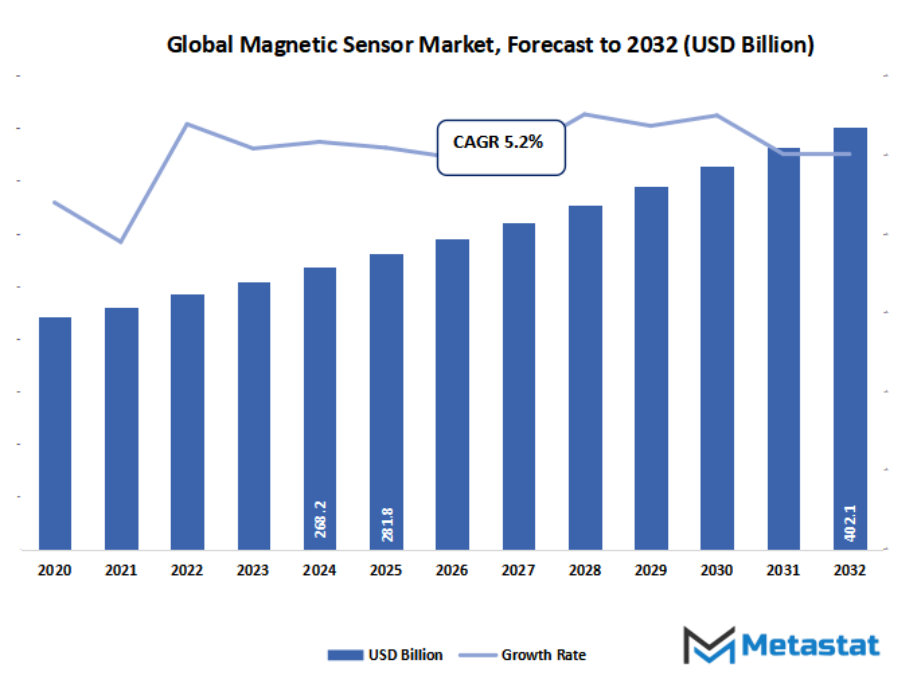
Can magnetic sensors redefine precision throughout automobile and industrial programs as technology advances, or will rising options venture their dominance within the coming years? How will the developing demand for automation and clever devices impact innovation and competition inside the international magnetic sensor marketplace, and what uncertainties lie beforehand for producers navigating fluctuating cloth prices and evolving customer needs?
Outside the realm of traditional application, this market will see opportunities in healthcare diagnostics, industrial automation, and environmental monitoring. The sensors will become capable of sensing slight magnetic changes that can enhance security, track performance, and lead systems towards predictive operation. With the advancing capabilities of miniaturization and integration with AI modules, magnetic sensors will increasingly form the core of smart devices that learn, adapt, and function without human intervention.
The future of this industry will not just be about producing small or energy-saving components but also about designing intelligent networks that can read complex magnetic information. From robots to renewable energy systems, the global magnetic sensor market will drive innovation by linking accuracy in data with intelligence in decision-making. With the need for more intelligent and reliable systems on the rise, this market will mold the digital and physical infrastructure of the future.
Market Segmentation Analysis
The global magnetic sensor market is mainly classified based on Technology, Application, End-Use Industry, Output Signal.
By Technology is further segmented into:
- Hall-Effect - Hall-Effect technology will remain preeminent with its dependability, low cost, and versatility across industries. Technological advances will further improve precision and sensitivity in favor of growing applications in electric vehicles and robotics. Continued adoption of Hall-Effect sensors in compact devices will secure their position in industries.
- Anisotropic Magnetoresistance (AMR) - Anisotropic Magnetoresistance (AMR) era will see increasing call for as groups look for sensors with high sensitivity and much less noise interference. AMR sensors might be preferred for his or her durability and strength performance, specifically in industrial automation and automobile systems where specific detection of the magnetic area ensures operational safety and overall performance.
- Giant Magnetoresistance (GMR) - Giant Magnetoresistance (GMR) sensors becomes popular because of their high signal-to-noise ratio and ability for miniaturization. Future progress in nanotechnology will enable wider GMR use across precision-primarily based systems like statistics centers and healthcare device. Future application will revolve around improving study heads and position-sensing programs.
- Tunnel Magnetoresistance (TMR) - Tunnel Magnetoresistance (TMR) sensors will enjoy a growth in call for way to their excessive precision and minimum energy consumption. They will discover their way into electric powered mobility, renewable strength, and wise production, where excessive-performance magnetic detection can facilitate automation and sustainable energy transformation inside the worldwide enterprise.
- Other Technologies - Other sensors, consisting of fluxgate and magneto-inductive sensors, will stay to have niche packages in aerospace, defense, and geophysical surveying. Future development is predicted to be focused round better temperature stability and better energy performance, in step with the growing want for durable and lengthy-lasting sensor answers for superior applications.
By Application the market is divided into:
- Consumer Electronics - Consumer electronics will continue to be a dominant sector with wearables, smartphones, and gaming devices all merging sophisticated sensing technologies. Products of the future will be based on smaller, more efficient magnetic sensors to provide increased user satisfaction, allowing proper orientation detection, gesture control, and navigation features in smaller devices.
- Automotive - The automotive industry will spearhead the utilization of magnetic sensors, led by electric vehicle manufacturing and development for autonomy. The sensors will provide vehicle safety, accurate measurement of position, and motor control efficiency. Global development for smart and connected mobility will continue to spur demand within this segment.
- Industrial Automation - Industrial automation will increasingly make use of magnetic sensors in order to maximize the performance of machinery by ensuring accuracy in motion control and equipment protection. Future factories will rely on sensors with ability to withstand harsh environments and provide precise data for predictive maintenance, productivity improvement, and energy efficiency.
- Healthcare and Medical Devices - Medical equipment and healthcare will see more applications of magnetic sensors for precise diagnosis and monitoring. From MRI machines to prosthetics, sensor technology will enable sophisticated medical engineering. Further research will render sensors more bio-compatible and effective at monitoring physiological motions and internal bodily functions.
- Aerospace and Defense - Applications in aerospace and defense will grow as complex navigation, missile guidance, and aircraft positioning rely on magnetic sensing. Future defense systems will rely on ultra-sensitive and radiation-hardened sensors that can operate under extreme conditions and provide reliable performance throughout sophisticated missions.
- Data-Centre and Server Storage - Applications in data-center and server storage will be supported by magnetic sensors with capabilities for high-speed reading of data and accurate control. Increasing requirements for effective cloud storage and computing systems will fuel additional sensor development, enabling compact architectures and high-workload reliability.
- Other - Other uses, such as marine and energy exploration, will persist in the use of magnetic sensors for direction sensing and mapping analysis. Advances in technology will enhance the stability and durability of sensors in favor of accurate environmental measurement and sustainable development activities in distant or harsh environments.
By End-Use Industry the market is further divided into:
- Automotive OEMs and Tier-1s - Automotive OEMs and Tier-1 suppliers are going to be key drivers of marketplace growth. Ongoing growth in electric powered and hybrid automobiles will generate greater demand for sensors with better accuracy in modern detection, wheel velocity sensing, and role monitoring, facilitating safer and extra intelligent automobile designs globally.
- Consumer Electronics OEMs - Consumer electronics unique equipment manufacturers will give attention to integrating small and energy-efficient sensors into new devices. Future electronics will be based on enhanced magnetic sensing to support augmented reality, sophisticated motion detection, and smarter connectivity, revolutionizing user engagement and performance in a number of product classes.
- Industrial Equipment Manufacturers - Industrial Equipment Manufacturers will rely more and more on sensors to automate intricate systems and guarantee accuracy in operation. Intelligent magnetic sensing solutions will be used to maximize robot performance, quality control, and predictive maintenance, driving future manufacturing facilities fueled by digital and autonomous processes.
- Energy and Utilities - Energy and Utilities will add magnetic sensors to make the system more efficient and reliable. Future applications will concentrate on energy harvesting, intelligent grid monitoring, and power generation optimization. The technology will advance sustainability activities through better performance monitoring and fault detection in all renewable energy infrastructures.
- Healthcare OEMs - Medical OEMs will look to magnetic sensors for the creation of next-generation treatment and diagnostic systems. Advances will allow for more precise imaging, surgical navigation, and prosthetic performance that will make healthcare more effective and patient-centered based on real-time interpretation of magnetic data.
- Aerospace and Defense Primes - Aerospace and Defense Primes will further employ magnetic sensors for navigation during flight, space exploration, and defense electronics. Future developments will focus on miniaturized, radiation-hardened, and ultra-sensitive sensors to provide strong reliability expectations in high-risk missions and aerospace safety systems.
By Output Signal the global magnetic sensor market is divided as:
- Digital (IC/SPI, SENT, PSI5) - Digital sensors like IC/SPI, SENT, and PSI5 will lead the marketplace due to the fact they can send easy and noise-immune signals. Increased utility in electric powered motors, robotics, and business automation will propel demand for smart and programmable sensors that maximize machine communique and real-time tracking effectiveness.
- Analog (Linear Voltage/Current) - Linear voltage or current output analog sensors will remain pertinent in situations that need to continuously vary a signal. Improved linearity, response rate, and power consumption are what future innovations will aim for, enabling them to be applied to automotive control systems as well as precision gear in every industrial setting.
|
Forecast Period |
2025-2032 |
|
Market Size in 2025 |
$281.8 Billion |
|
Market Size by 2032 |
$402.1 Billion |
|
Growth Rate from 2025 to 2032 |
5.2% |
|
Base Year |
2024 |
|
Regions Covered |
North America, Europe, Asia-Pacific, South America, Middle East & Africa |
Geographic Dynamics
Based on geography, the global magnetic sensor market is divided into North America, Europe, Asia-Pacific, South America, and Middle East & Africa. North America is further divided in the U.S., Canada, and Mexico, whereas Europe consists of the UK, Germany, France, Italy, and Rest of Europe. Asia-Pacific is segmented into India, China, Japan, South Korea, and Rest of Asia-Pacific. The South America region includes Brazil, Argentina, and the Rest of South America, while the Middle East & Africa is categorized into GCC Countries, Egypt, South Africa, and Rest of Middle East & Africa.
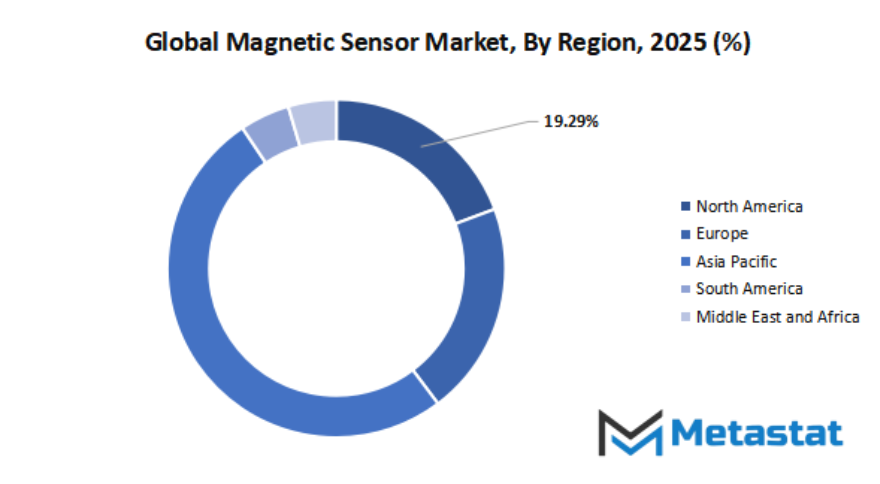
Competitive Landscape & Strategic Insights
The global magnetic sensor market has been experiencing regular boom as industries rely increasingly on accuracy, automation, and shrewd sensing generation. Magnetic sensors have an essential position to play in brand new electronics and car systems, in which they're employed for detecting position, velocity, and movement. Magnetic sensors will preserve influencing the development of electric cars, industrial automation, and patron electronics, supplying new possibilities for innovation. As digital transformation advances throughout industries, the want for green and dependable magnetic sensing answers will only increase, and this marketplace is for this reason a few of the most dynamic arenas in superior electronics.
The market is a blend of both global leaders and rising regional players, each with their own form of expertise and product innovation. Emerging leaders like Allegro MicroSystems, Inc., Alps Alpine Co., Ltd., Amphenol, AMS Technologies AG, Analog Devices, and Asahi Kasei Corporation have established a good reputation for reliability and quality. Others including Baumer Holding AG, Elmos Semiconductor SE, Honeywell International, Inc., iC-Haus, Infineon Technologies, and MEMSIC Semiconductor Co., Ltd. have also been major contributors in developing magnetic sensing solutions appropriate for various applications. Their continued investments in research and development will further solidify the technology support of this industry.
New entries are also making an entry, bringing new competition and innovation. MultiDimension Technology Co., Ltd., Murata Manufacturing, NVE Corporation, and NXP Semiconductors are diversifying their portfolios to cater to the increasing demands of auto and consumer electronic industries. Panasonic Corporation, Schneider Electric, Sensirion, STMicroelectronics, TDK Corporation, TE Connectivity, and Texas Instruments have persisted to diversify the market with new sensor designs and coffee-strength technology. Together, this combination of famend businesses and new entrants has fostered a dynamic but lightly balanced competitive weather that needs improvement and efficient manufacturing always.
As sustainability and electricity performance emerge as more substantial, magnetic sensors will stay the important thing aspect in future systems. They will permit the growth of electrical vehicle development, clever grids, and clever manufacturing through enhancing protection, accuracy, and overall performance. They will lead new avenues for market boom in robotics, renewable power structures, and clinical devices. The opposition among major players may even pressure the limits of sensor miniaturization and integration, so as to make technology greater tolerant of compact and complex systems.
Over the following few years, the global magnetic sensor market will revel in strong growth as technological improvements maintain to enhance. Businesses specializing in research, product dependability, and application variety could be within the excellent function to thrive. With its huge array of individuals—from lengthy-standing worldwide businesses to rising innovators—the market will stay an integral issue of the electronics and automation sectors, permitting smarter, more secure, and more efficient systems worldwide.
Market Risks & Opportunities
Restraints & Challenges:
- High sensitivity to environmental interference can affect accuracy and reliability. - A high sensitivity to environmental interference may compromise accuracy and reliability. Magnetic sensors tend to struggle with temperature variation, electromagnetic noise, or powerful external fields, which distort measurements. Consistent operation under such conditions will demand sophisticated shielding and calibration techniques to achieve reliable operation in varied environments.
- Complex manufacturing processes increase production costs, limiting mass adoption. - Advanced manufacturing processes are more costly, restricting mass application. The accuracy needed in sensor production means that high-grade materials and technology are called for, further adding to the cost to manufacturers and consumers. As production grows in the future, new fabrication technologies and affordable materials will be necessary to enable these sensors to be more affordable to use on a large scale.
Opportunities:
- Expansion in IoT and smart device applications offers significant growth potential. - Growth in IoT and clever device usage gives big boom possibilities. With the arena transferring toward smarter systems, magnetic sensors may be instrumental in facilitating connectivity, automation, and clever tracking. Integration into wearables, automobiles, and commercial machines will gas demand, providing new possibilities for technological development and international growth.
Forecast & Future Outlook
- Short-Term (1–2 Years): Recovery from COVID-19 disruptions with renewed testing demand as healthcare providers emphasize metabolic risk monitoring.
- Mid-Term (3–5 Years): Greater automation and multiplex assay adoption improve throughput and cost efficiency, increasing clinical adoption.
- Long-Term (6–10 Years): Potential integration into routine metabolic screening programs globally, supported by replacement of conventional tests with advanced biomarker panels.
Market size is forecast to rise from USD 281.8 Billion in 2025 to over USD 402.1 Billion by 2032. Magnetic Sensor will maintain dominance but face growing competition from emerging formats.
Essentially, the future for this business will extend into areas where human sight is restricted but accuracy is paramount. It will push its existing limits, establishing itself as a platform for technologies that will determine how contemporary systems perceive, react, and adapt over time.
Report Coverage
This research report categorizes the global magnetic sensor market based on various segments and regions, forecasts revenue growth, and analyzes trends in each submarket. The report analyses the key growth drivers, opportunities, and challenges influencing the global magnetic sensor market. Recent market developments and competitive strategies such as expansion, type launch, development, partnership, merger, and acquisition have been included to draw the competitive landscape in the market. The report strategically identifies and profiles the key market players and analyses their core competencies in each sub-segment of the global magnetic sensor market.
Magnetic Sensor Market Key Segments:
By Technology
- Hall-Effect
- Anisotropic Magnetoresistance (AMR)
- Giant Magnetoresistance (GMR)
- Tunnel Magnetoresistance (TMR)
- Other Technologies
By Application
- Consumer Electronics
- Automotive
- Industrial Automation
- Healthcare and Medical Devices
- Aerospace and Defense
- Data-Centre and Server Storage
- Other
By End-Use Industry
- Automotive OEMs and Tier-1s
- Consumer Electronics OEMs
- Industrial Equipment Manufacturers
- Energy and Utilities
- Healthcare OEMs
- Aerospace and Defense Primes
By Output Signal
- Digital (IC/SPI, SENT, PSI5)
- Analog (Linear Voltage/Current)
Key Global Magnetic Sensor Industry Players
- Allegro MicroSystems, Inc.
- Alps Alpine Co., Ltd.
- Amphenol
- AMS Technologies AG
- Analog Devices
- Asahi Kasei Corporation
- Baumer Holding AG
- Elmos Semiconductor SE
- Honeywell International, Inc.
- iC-Haus
- Infineon Technologies
- MEMSIC Semiconductor Co., Ltd.
- MultiDimension Technology Co., Ltd.
- Murata Manufacturing
- NVE Corporation
- NXP Semiconductors
- Panasonic Corporation
- Schneider Electric
- Sensirion
- STMicroelectronics
- TDK Corporation
- TE Connectivity
- Texas Instruments
WHAT REPORT PROVIDES
- Full in-depth analysis of the parent Industry
- Important changes in market and its dynamics
- Segmentation details of the market
- Former, on-going, and projected market analysis in terms of volume and value
- Assessment of niche industry developments
- Market share analysis
- Key strategies of major players
- Emerging segments and regional growth potential



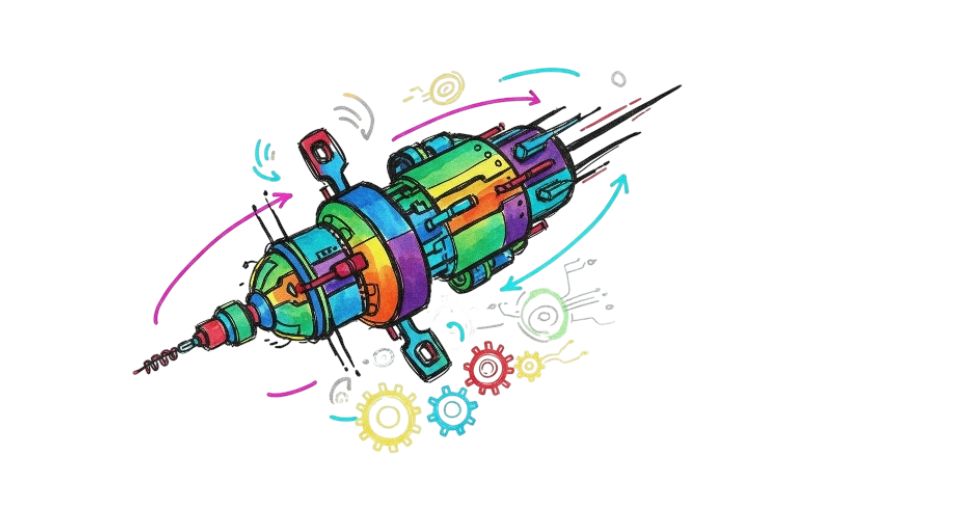
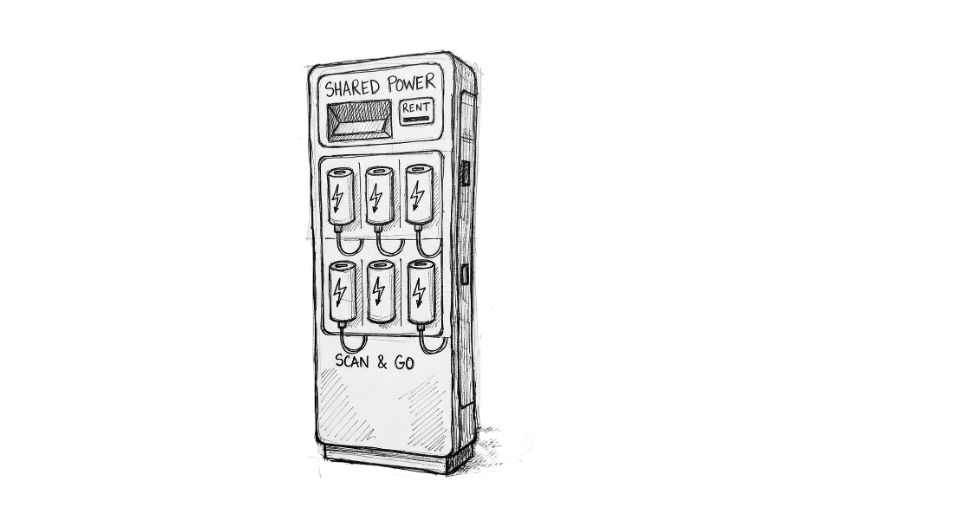
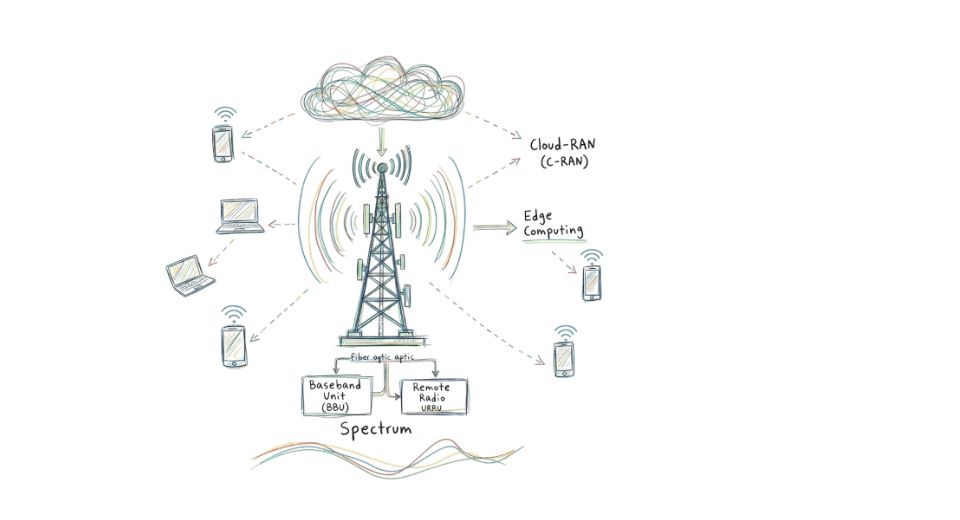
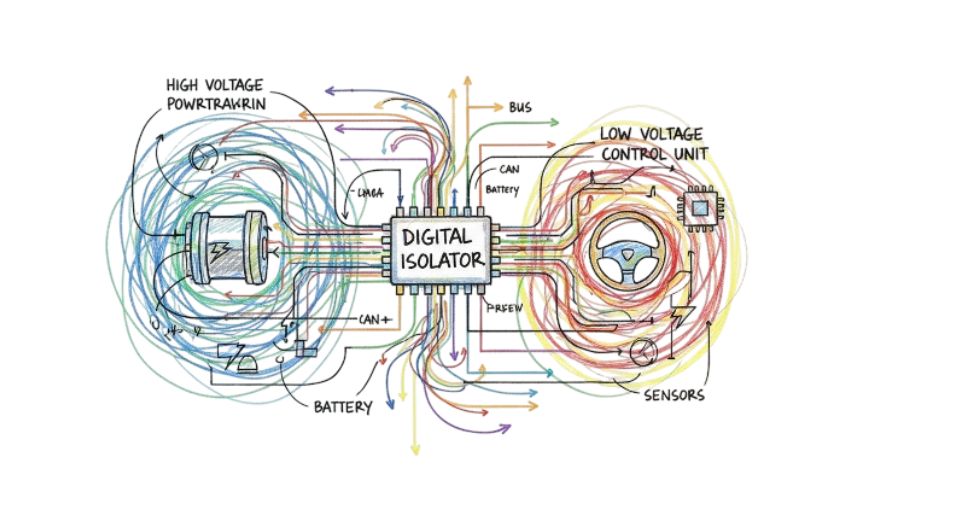

 US: +1 3023308252
US: +1 3023308252






